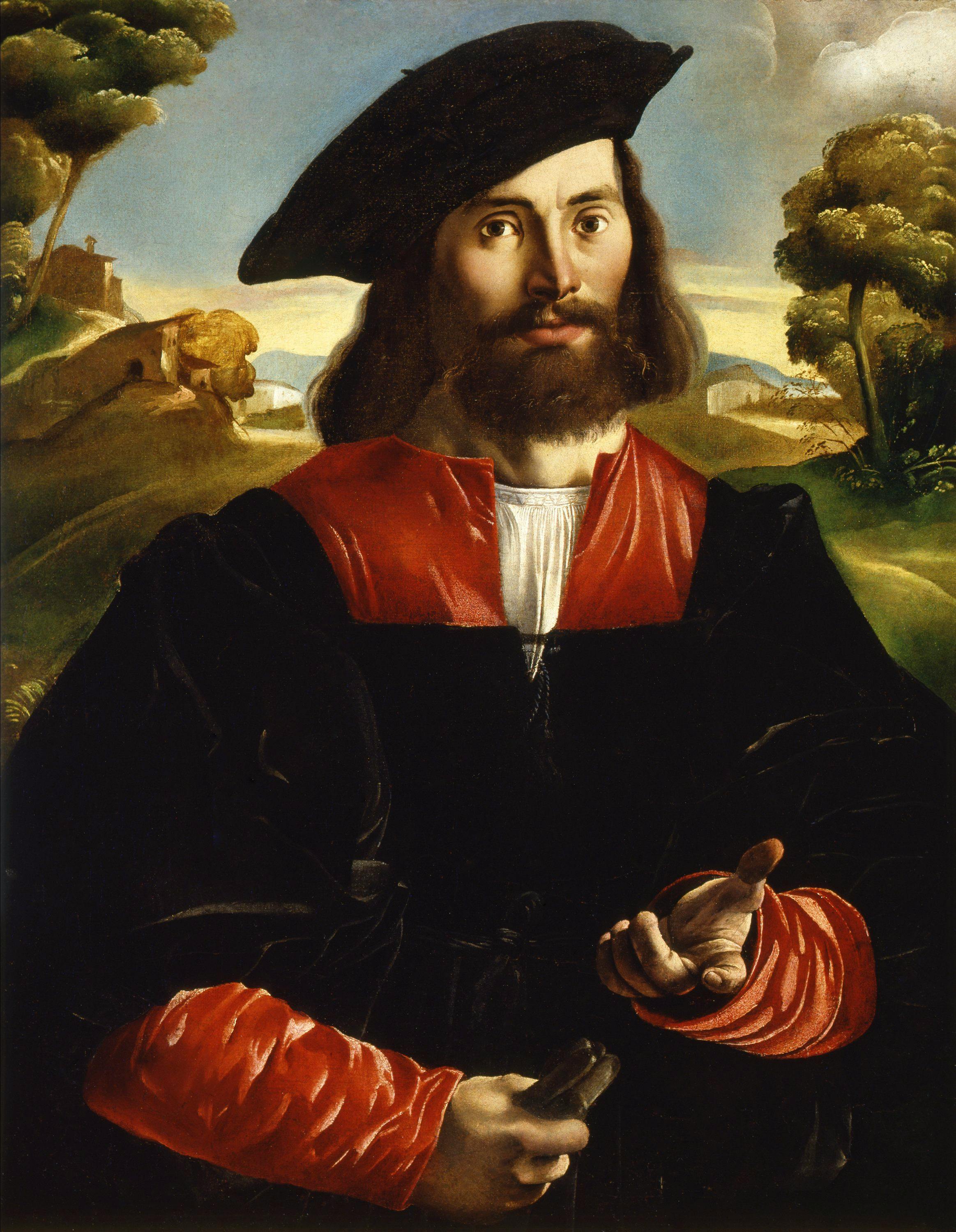Portrait of a Man (Portrait of a Gentleman with a Glove)
Emilian artist (so-called “Friulian friend of Dosso”) active in Ferrara, Emilia (between 1510 and around 1540)
In front of a landscape set up like a theatrical backdrop, stands the figure of this elegant gentleman with piercing eyes, one hand clutching a glove and the other, virtuously painted in foreshortening, outstretched towards the spectator as if ready to converse with him.The gesture emphasises the oratorical skills of the subject, a fundamental requirement in a Humanist court such as that of the Este family in Ferrara: the artist, who probably belonged to Dosso Dossi’s circle, seems to have come from the Emilian city.
The portrait is part of a group of paintings by an anonymous author, renamed the “Friulian Friend of Dosso” by the art critic and historian Roberto Longhi, who dated the work as the oldest in the corpus due to an archaising approach that he associated with the late followers of Bellini and Giorgione.The famous scholar, therefore, hypothesised for the anonymous artist a Veneto-Friuli birth - later discarded by critics - with knowledge of Tuscan painting and a transit to one of the most important centres of culture and patronage of the Renaissance, the Este court, where he would have actually worked and lived. The crystalline eyes of the young man depicted are reminiscent of those painted by Boccaccio Boccaccino, just as the facial expression seems to recall the faces of Bartolomeo Veneto, artists who were both active in Ferrara, as well as Dosso Dossi, from whom the anonymous painter has taken suggestions to depict the landscape immersed in a magical, suspended and chivalrous atmosphere. Instead, the realism of the folds of the hand facing the viewer and the light spots on the robe could refer to Lombard-Venetian memories, close to Savoldo’s painting approach. The portrait lacks a useful indication to recognise the person portrayed, but it could be a man of letters from the Este court at the time of Ludovico Ariosto, which can be placed around the second decade of the 16th century. The work, considered in time of the Grand Duchy to be a self-portrait of Sodoma, and, as such, recorded in 1691 under Cosimo III de’ Medici, was later attributed to Alessandro Oliverio and later, by Bernard Berenson, to Sebastiano del Piombo, until Longhi’s intuition, corroborated and supported by other critics, which, however, left unsolved the identity of the artist and the very traceability to a single hand of the corpus of paintings he brought together.
R. Longhi, L'amico friulano del Dosso, in “Paragone”, XI, 1960, 131, p. 5, tav. 2; L. Berti (a cura di), Gli Uffizi. Catalogo Generale, Firenze 1979, p. 396, P1118; A. Natali, Amico friulano del Dosso (attribuito), in Il restauro del ‘Leone X’ di Raffaello, “Gli Uffizi. Studi e ricerche. I pieghevoli”, 28, 1996; A. Bacchi, "Tempus elevat omnia": la Verità dell'‘Amico friulano del Dosso' in I veli del tempo. Opere degli Uffizi restaurate, a cura di A. Natali, Cinisello Balsamo (MI) 1997, pp. 45 e 48, fig. 4; D. Benati, Amico friulano del Dosso – San Giovanni Battista, in Fondantico (Maastricht, Tefaf, 2020), Bologna 2020, p. 12; Ritratto d’uomo – Alessandro Oliverio, “Catalogo Generale dei Beni Culturali”, (https://catalogo.beniculturali.it/detail/HistoricOrArtisticProperty/0900287950)
